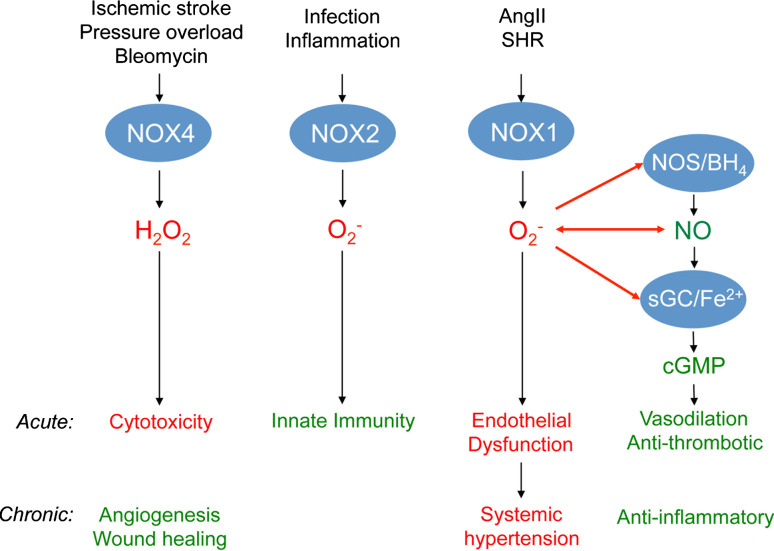Fig. 4.
The role of NOX1, NOX2, and NOX4 in disease models. NO, generated by NO-synthases (NOS), activates soluble guanylate cyclase (sGC) by binding to its reduced (Fe2+) heme moiety leading to the formation of cGMP from GTP. cGMP mediates protective effects, e.g. vasodilation and anti-inflammation. This signaling pathway is most likely disturbed by NOX1-derived superoxide (O2 −) as shown in Angiotensin II-induced hypertension and spontaneous hypertensive rats (SHR). Superoxide can either directly interact with NO to form peroxynitrite or oxidize the essential NOS cofactor tetrahydrobioapterin (BH4) and thus uncouple NOS. Uncoupled NOS forms superoxide itself (not shown). Further, superoxide can oxidize the Fe2+ heme of sGC. Thereby, sGC becomes insensitive to NO. These mechanisms most likely account, at least in part, for the acute effects of increased NOX1 activity mediating endothelial dysfunction and the chronic effects that are discussed to cause hypertension. NOX2-derived superoxide is a major signaling molecule in innate immunity mediating host defense. NOX4 is unlikely to directly interfere with the NO/cGMP-signaling pathway as it releases hydrogen peroxide (H2O2) and not superoxide. However, in high concentrations, H2O2 causes acute cytotoxicity. This mechanism is suggested to be involved in NOX4-mediated effects after acute ischemic stroke, acute effects of pressure overload in heart, and bleomycin-induced cytotoxicity. The lower chronic activity of NOX4 seems to be involved in angiogenesis and wound healing, and thus rather protective

